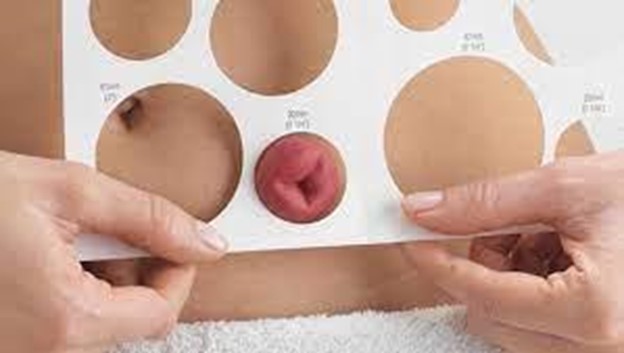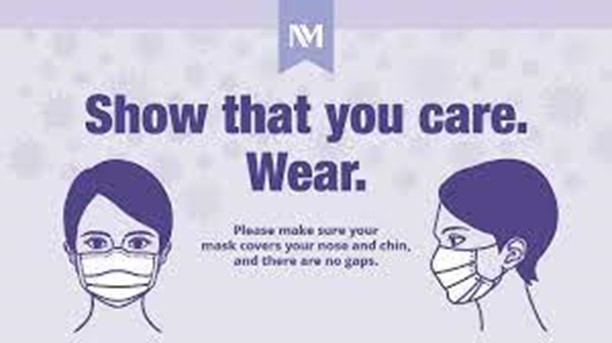RN V Fundamentals S 2019 Final Proctored Exam
ATI RN VATI Fundamentals S 2019 Final Proctored Exam
Total Questions : 57
Showing 10 questions Sign up for moreA nurse is planning care for a client who has a fever due to an infection. Which of the following interventions should the nurse include in the plan of care?
Explanation
Choosing the best intervention for a client with fever due to infection:
The most appropriate intervention for a client with fever due to infection depends on various factors, including the severity of the fever, the client's age and overall health, and their individual preferences. Let's analyze each option and explain its rationale:
a. Encourage fluid intake of 2,500 mL/day.
Rationale:
- Pros:Fever often leads to increased sweating and fluid loss through respiration. Maintaining adequate hydration is crucial to prevent dehydration, which can worsen discomfort and potentially lead to complications like organ dysfunction. Encouraging a fluid intake of 2,500 mL/day is generally recommended for adults with fever, although individual needs may vary based on factors like body size and activity level.
- Cons:While hydration is essential, forcing fluids on a client who experiences nausea or vomiting can be counterproductive. Additionally, some clients with certain medical conditions, like heart failure, may require fluid restriction, making this option inappropriate.
b. Maintain the environmental temperature at 16°C to 18°C (60°F to 65°F).
Rationale:
- Cons:Excessively cool environments can trigger shivering, which actually increases body heat production and can worsen the fever. Additionally, maintaining such a low room temperature can be uncomfortable for the client and may increase their risk of chills.
c. Immerse the client in cold water.
Rationale:
- Cons:Immersing a client in cold water, like a bath, can be a dangerous and counterproductive intervention. The sudden chill can trigger violent shivering, significantly increasing body heat production and potentially causing shock. Moreover, rapid cooling can be uncomfortable and even risky for people with certain health conditions like heart disease.
d. Assist the client to ambulate.
Rationale:
- Cons:While ambulation is generally encouraged for healthy clients, it may not be suitable for everyone with a fever. Depending on the severity of the fever and the client's overall condition, ambulation could be tiring and even unsafe. In some cases, rest may be more appropriate to promote comfort and recovery.
Therefore, the most appropriate intervention for a client with fever due to infection is:
a. Encourage fluid intake of 2,500 mL/day.
Remember:
- Individualize care based on the client's specific needs and preferences.
- Monitor the client's response to interventions and adjust as needed.
- Consult with the healthcare provider for guidance on managing the fever and addressing any underlying infection.
A nurse is providing teaching to a client who has a new colostomy. Which of the following actions should the nurse take when demonstrating how to change the ostomy appliance?
Explanation
Choice A rationale:
Apply the skin sealant on damp skin. Rationale: Applying skin sealant on damp skin is not the recommended approach for securing an ostomy appliance. It's important to ensure that the skin is clean and dry before applying the sealant or the skin barrier. Moisture can compromise adhesion and lead to skin irritation or appliance detachment.
Choice B rationale:
Remove the appliance before emptying the pouch. Rationale: Removing the appliance before emptying the pouch is not a necessary step when changing an ostomy appliance. Typically, the pouch can be emptied without removing the entire appliance, which helps maintain the seal and reduces unnecessary skin exposure.
Choice C rationale:
Ensure that the skin is slightly damp for better adhesion of the pouch. Rationale: Ensuring that the skin is slightly damp is not advisable for better adhesion of the pouch. The skin should be completely dry before applying the pouch to ensure proper adhesion. Moisture on the skin can lead to leakage or detachment of the appliance.
Choice D rationale:
Trace the size of stoma onto the skin barrier. Rationale: This choice is the correct answer because tracing the size of the stoma onto the skin barrier ensures a precise fit, which is crucial for preventing leaks and maintaining the integrity of the ostomy. A proper fit also helps in preventing skin irritation and discomfort. Choosing the correct barrier size based on the stoma's dimensions is a key aspect of effective ostomy care.

A nurse receives a telephone call from a client's family member, who asks the nurse for an update on the client's condition. Which of the following actions should the nurse take to maintain the client's confidentiality?
Explanation
Choice A rationale:
Request additional information about the caller's relationship to the client. Rationale: While understanding the caller's relationship to the client is important for confirming the legitimacy of the request, it doesn't address the core concern of maintaining client confidentiality. Sharing information with individuals solely based on their relationship can still lead to breaches in privacy.
Choice B rationale:
Provide a general update about the client's condition over the telephone. Rationale: Providing a general update over the telephone is not a secure method of maintaining client confidentiality. General updates can inadvertently disclose sensitive information and should only be communicated through secure and private channels.
Choice C rationale:
Refer the family member to the client's provider for the update. Rationale: This choice is the correct answer as it ensures that the family member receives accurate and appropriate information from the authorized source, which is the client's healthcare provider. This approach maintains the confidentiality of the client's medical information and adheres to privacy regulations.
Choice D rationale:
Encourage the family member to contact the client directly for information. Rationale: Encouraging direct contact between the family member and the client for information sharing can potentially compromise the client's privacy. The client might not want their condition disclosed to certain individuals, and it's the responsibility of the healthcare provider to ensure that sensitive information is shared appropriately and securely.
A nurse is admitting a client who has rubella. Which of the following actions should the nurse plan to take?
Explanation
Choice A rationale:
Instructing the client's loved ones that the client should not have fresh flowers in their room (Choice A) is not a necessary action for rubella isolation. Rubella is transmitted through respiratory droplets, and the prohibition of fresh flowers is not a relevant precaution.
Choice B rationale:
Wearing a surgical mask when within 0.9 m (3 feet) of the client (Choice B) is the correct action. Rubella is an airborne disease, and wearing a surgical mask helps prevent the spread of infectious respiratory droplets to the nurse and other individuals.

Choice C rationale:
Placing the client in a room with negative-airflow pressure (Choice C) is not specifically indicated for rubella isolation. Negative-airflow pressure rooms are typically used for diseases that require strict airborne precautions, such as tuberculosis.
Choice D rationale:
Instructing the client that visitors will not be allowed while they are in isolation (Choice D) is not entirely accurate for rubella isolation. While isolation precautions are necessary, visitors can enter the room if they are properly protected, including wearing masks and following infection control protocols.
A nurse is caring for a postoperative client and observes evisceration of the abdominal surgical wound. After covering the wound with a sterile, saline-soaked dressing, which of the following actions should the nurse take?
Explanation
Choice A rationale:
Positioning the client so that they are lying flat (Choice A) is not the appropriate action after evisceration. Evisceration is the protrusion of internal organs through a wound, and lying flat could potentially put pressure on the exposed organs and worsen the situation.
Choice B rationale:
Increasing the client's oral fluid intake (Choice B) is generally a good practice for postoperative care, but it is not the priority in the case of evisceration. The primary concern is protecting the exposed organs and preventing infection.
Choice C rationale:
Preparing the client for emergency surgery (Choice C) is the correct action after observing evisceration. Evisceration is a surgical emergency, and the client needs immediate medical intervention to repair the wound and secure the exposed organs.
Choice D rationale:
Applying gentle pressure to the dressed wound (Choice D) is contraindicated in the case of evisceration. Applying pressure could further damage the exposed organs and increase the risk of infection.
A nurse is assessing a client's coping skills. Which of the following should the nurse identify as an internal stressor?
Explanation
Choice A rationale:
Peer pressure (Choice A) is an external stressor, as it involves the influence of others on an individual's thoughts or actions. It originates from outside the individual and is not directly related to an internal psychological response.
Choice B rationale:
Death of a family member (Choice B) is an external stressor, as it is an event that occurs externally to the individual. While it can cause significant emotional distress, it is not considered an internal stressor.
Choice C rationale:
Fear of medical test results (Choice C) is the correct answer as an internal stressor. Internal stressors are psychological or emotional factors that originate within the individual and contribute to stress. Fear of medical test results is a personal worry that can lead to anxiety and emotional turmoil.
Choice D rationale:
Job transfer to another city (Choice D) is an external stressor, as it involves a change in the individual's external environment. It is not an internal psychological factor causing stress.
A nurse is preparing to notify the provider about a change in a client's status. Which of the following information should the nurse plan to include in the "background" portion of the Situation, Background, Assessment, Recommendation (SBAR) Communication tool?
Explanation
Choice A rationale:
In the "background" portion of the SBAR communication tool, the nurse should include the client's present condition. This information provides the provider with context and a clear understanding of the client's current status. It helps the provider to have a baseline understanding before moving on to the assessment and recommendation stages of the communication. Including the client's present condition allows the provider to quickly grasp the urgency and severity of the situation, enabling them to make informed decisions regarding the client's care.
Choice B rationale:
Suggestions for the provider regarding client care are typically included in the "assessment" or "recommendation" portions of the SBAR communication tool, rather than the "background" portion. The "background" portion is focused on providing information about the current situation and the client's present condition, setting the stage for the rest of the communication.
Choice C rationale:
Physical findings are part of the assessment and observation of the client's current condition. While important, these findings are better suited for the "assessment" portion of the SBAR communication. The nurse should summarize the physical findings in the "assessment" section after providing the context in the "background" section.
Choice D rationale:
Previous treatments are also relevant information, but they belong in the "assessment" or "background" portions of the SBAR communication tool. The nurse should provide the provider with information about the client's current condition before discussing previous treatments, as the provider needs to know the current situation before considering the relevance of past interventions.
A nurse is providing discharge teaching to a client who has heart failure and a new prescription for furosemide. Which of the following foods should the nurse recommend to the client as the best source of potassium?
Explanation
Choice A rationale:
1 cup of shredded lettuce is low in potassium and is not the best source of potassium for a client with heart failure. While vegetables like lettuce are generally healthy, they do not provide a significant amount of potassium.
Choice B rationale:
1 cup of cantaloupe is the best source of potassium among the given options. Cantaloupe is a fruit that contains a moderate amount of potassium. Including this fruit in the client's diet can help maintain a balanced potassium level, which is important for heart health.

Choice C rationale:
1 oz of tuna is a source of protein but is not particularly rich in potassium. While protein intake is important for overall health, other choices on the list provide more potassium, which is specifically needed for clients with heart failure.
Choice D rationale:
1 cup of raspberries is a good source of fiber and antioxidants, but it is not as rich in potassium as cantaloupe. While raspberries can be a healthy addition to the diet, they are not the best choice for addressing potassium needs in this scenario.
A nurse is observing a newly licensed nurse provide client care. Which of the following actions by the newly licensed nurse requires intervention by the nurse?
Explanation
The correct answer is choice d. When removing a peripheral IV catheter, the nurse uses scissors to remove the tape that secures the catheter.
Choice A rationale:
Inserting the tip of the enema tube 8 cm (3.1 in) is within the recommended range for adults, which is typically 7.5 to 10 cm (3 to 4 in). This action does not require intervention.
Choice B rationale:
Elevating the head of the bed when caring for a client’s body after death is a standard practice to prevent discoloration of the face and to facilitate drainage. This action does not require intervention.
Choice C rationale:
Using a clean washcloth, soap, and water for indwelling catheter care is appropriate and follows infection control guidelines. This action does not require intervention.
Choice D rationale:
Using scissors to remove the tape that secures a peripheral IV catheter is unsafe as it poses a risk of cutting the catheter or the client’s skin. This action requires intervention to ensure the nurse uses a safer method, such as using adhesive remover or gently peeling the tape away by hand.
A nurse is planning a community education session about the basic principles of first aid. Which of the following teaching strategies should the nurse implement for a group of adult learners in a community setting?
Explanation
Choice A rationale:
Teaching the most crucial content early in the session is an effective strategy to engage learners and ensure that they receive essential information. This approach captures their attention and provides a solid foundation for the rest of the session. It helps establish relevance and interest, keeping the learners engaged throughout the educational program.
Choice B rationale:
Assuming that learners have no prior knowledge of first aid might not be the best approach. Adult learners often come with varying levels of knowledge and experience. It's important to assess the learners' prior knowledge and adjust the content accordingly to avoid redundancy or information that is too basic for them.
Choice C rationale:
Repetition of procedures and techniques is a valuable teaching strategy. Repetition aids in retention and comprehension. Reiterating important points reinforces learning and helps participants remember critical steps in first aid procedures. Avoiding repetition can lead to incomplete understanding and retention.
Choice D rationale:
Dividing the planned program into several sessions held about 1 week apart might not be the most effective strategy for community education. Spacing the sessions too far apart could result in learners forgetting the content or losing interest. It's better to maintain a consistent schedule to ensure continuity and engagement.
You just viewed 10 questions out of the 57 questions on the ATI RN VATI Fundamentals S 2019 Final Proctored Exam Exam. Subscribe to our Premium Package to obtain access on all the questions and have unlimited access on all Exams. Subscribe Now



